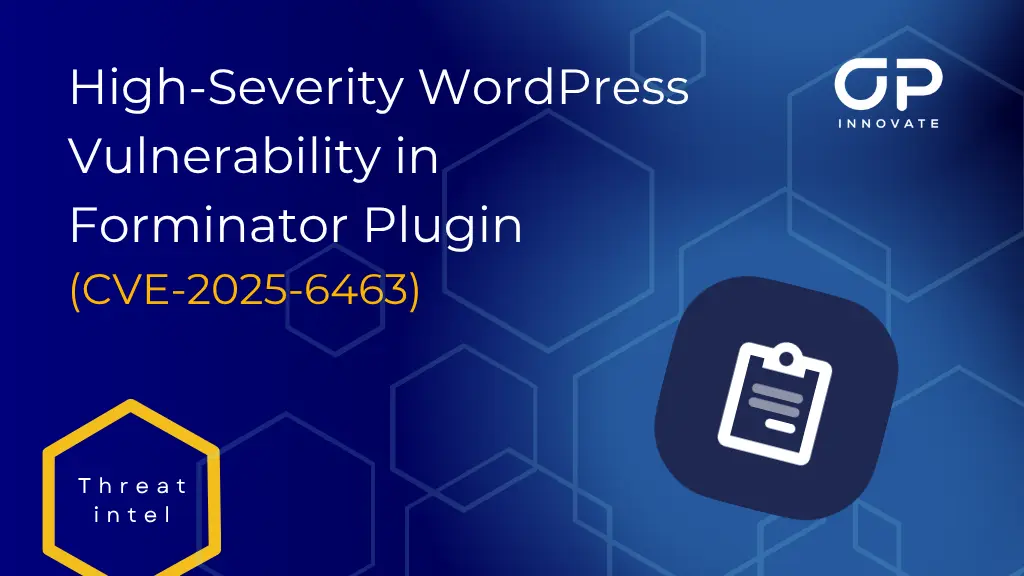For organizations, penetration testing provides immense value as it allows them to proactively strengthen the security of their critical IT systems, applications, and data against compromise. While the costs of penetration testing can vary widely based on the size and complexity of the organization and systems being tested, industry research indicates that in 2023, the average cost ranges start at $4,000 but can reach upwards of $100,000.
This article will provide an overview of the typical pricing for various types of pentesting services and the key factors that influence the costs. It will also discuss recommendations for how often organizations should budget for and undergo penetration testing as part of a strong cybersecurity strategy.
Average Penetration Testing Cost
So, how much is penetration testing going to set you back in 2023? Well, on average, you can expect to pay between $4,000 and $14,000 for a network pentest. For a web app pentest, the cost is between $6,000 to $15,000. And for a mobile app pentest, it ranges from $5,000 to $15,000.
If you’re a small business, a simple pentest could cost you anywhere from $1,000 to $5,000. On the other hand, large organizations might be looking at a price tag of $15,000 or even upwards of $100,000 for an enterprise pentest.
Keep in mind that the average hourly rate for pentesters is around $200, so it’s definitely an investment worth considering.
When it comes to the cost of a penetration test, there are several factors to consider. The complexity and scope of the project, the level of expertise required, and the time it takes to complete the testing all contribute to the overall cost. Additionally, the reputation and experience of the testing services provider can also influence the price.
To get an accurate penetration test quote and determine the cost of a penetration test for your specific needs, it is recommended to reach out to different providers and discuss your requirements. They can provide you with a detailed breakdown of the test pricing based on your unique circumstances.
Overall, investing in penetration testing services is crucial for ensuring the security of your network, web applications, and mobile apps. With the increasing number of cyber threats, the cost of a potential breach far outweighs the cost of a penetration test. So, it’s better to be proactive and invest in securing your systems before it’s too late.
Factors Affecting Cost of Pen Test
When considering the cost of a penetration test, there are several key factors that can affect the overall price.
Size/Complexity
Given the size and complexity of an organization’s IT infrastructure, the cost of penetration testing in 2023 can vary significantly.
The size and complexity of the IT infrastructure directly impact the amount of time and resources required for conducting a thorough penetration test.
Larger organizations with a higher number of endpoints, networks, and applications will generally incur higher costs compared to smaller organizations with a more streamlined infrastructure.
The scope of the penetration test, including the inclusion of web applications and different types of security testing such as black box testing and white box testing, can also impact the overall cost.
Additionally, the expertise and experience of the penetration tester can affect the pricing, as highly skilled professionals may charge higher rates.
It is crucial for organizations to carefully consider the size and complexity of their IT infrastructure when determining the budget for penetration testing in 2023.
Type of Pentest
To ensure the security of your organization’s IT infrastructure, consider the type of pentest that best suits your needs and engages with various potential vulnerabilities. The cost of penetration testing can vary depending on the type of test you choose.
There are different types of penetration tests, such as network, web, mobile, and social engineering tests. Each type focuses on different aspects of your organization’s security. For example, a black box penetration test simulates an attack from an external threat, while a gray box penetration test allows the tester to have some knowledge of the system.
The complexity and size of your IT infrastructure will also influence the cost of the penetration test. It is essential to discuss your specific requirements with a professional penetration testing service provider to get an accurate estimate of the cost involved.
Scope
Consider the scope of your organization’s IT infrastructure and experience a sense of empowerment as you navigate the world of penetration testing. When it comes to determining the penetration test pricing in 2023, the scope plays a crucial role.
The scope of the testing can vary from a single application or system to an entire enterprise. The broader the scope, the more time and effort required from the penetration testers, resulting in higher costs. Additionally, a larger scope may also require a more extensive range of testing techniques and tools, further impacting the overall cost.
It’s essential to carefully assess the scope of your organization’s IT infrastructure and align it with your security goals and budget. By doing so, you can make informed decisions and ensure that the cost of penetration testing remains reasonable and effective in safeguarding your systems.
Location
Location can have a significant impact on the pentest cost, as North America and Europe tend to be more expensive. This is mainly due to the higher cost of living and labor in these regions.
In North America and Europe, the average cost of penetration testing can range from $5,000 to $15,000 or more, depending on the complexity and scope of the project. However, it’s important to note that prices can vary widely depending on the specific location within these regions.
For example, major cities like New York or London may have higher prices compared to smaller towns. It’s also worth considering that some companies may offer remote or offshore pen test services, which can be more cost-effective.
Industry Being Tested
Industries such as finance and healthcare tend to incur higher expenses for penetration testing due to regulatory requirements. These sectors are highly regulated, requiring robust security measures to protect sensitive data and comply with industry-specific regulations.
Financial institutions, for example, must adhere to strict guidelines set by regulatory bodies like the Securities and Exchange Commission (SEC) or the Financial Industry Regulatory Authority (FINRA). Similarly, healthcare organizations are bound by the Health Insurance Portability and Accountability Act (HIPAA), which mandates the protection of patient information.
These additional compliance obligations necessitate more comprehensive and rigorous penetration testing, increasing the overall cost. Additionally, the complexity and intricacies involved in assessing the security of financial and healthcare systems further contribute to the higher average cost of pen tests in these industries.
Experience Level of Pentesters
Senior-level pentesters with extensive experience and expertise command higher hourly rates in the field of penetration testing. This is because their advanced skills and knowledge make them more effective in identifying and exploiting vulnerabilities in systems and networks.
As senior-level testers have accumulated years of experience in various industries, they possess a deep understanding of different technologies, architectures, and attack vectors. This enables them to provide more comprehensive and accurate assessments, which is highly valued by organizations seeking to strengthen their security posture. Consequently, their rates reflect the added value they bring to the table.
When it comes to penetration testing costs in 2023, it is essential to consider the experience level of the pentesters involved, as senior-level testers are likely to demand higher hourly rates compared to their less experienced counterparts.
Manual Testing or Automated Tools
Whether you choose to rely on manual testing or automated tools, it’s important to consider the specific needs and requirements of your organization to ensure a thorough and effective penetration testing process. Both approaches have their advantages and disadvantages.
Manual testing involves human testers who carefully examine your system for vulnerabilities. This method allows for a deeper understanding of the system and its potential weaknesses. However, it can be time-consuming and expensive, especially for larger systems.
On the other hand, automated tools offer a more efficient and cost-effective solution. These tools can quickly scan your system for common vulnerabilities and provide immediate results. They can also be used for continuous monitoring, ensuring that any new vulnerabilities are promptly identified.
Ultimately, the decision between manual testing and automated tools depends on factors such as budget, time constraints, and the complexity of your system. It may be beneficial to combine both approaches to leverage their respective strengths and achieve comprehensive penetration testing coverage.
Full-time Testers or Outsource
If you’re considering the best approach for your organization, you might be wondering whether to hire full-time testers or outsource the task to consulting firms. The decision ultimately depends on your specific needs and circumstances.
Hiring full-time testers can provide several benefits. They’re dedicated resources who can focus solely on your organization’s testing needs and provide continuity in the testing process. They can also develop a deep understanding of your systems and identify vulnerabilities specific to your environment.
On the other hand, outsourcing penetration testing to consulting firms can offer specialized expertise and a fresh perspective. These firms often have extensive experience working with a variety of organizations and can bring a wealth of knowledge and best practices. Additionally, outsourcing can be cost-effective, as you only pay for the services you need, without the overhead of hiring full-time employees.
Ultimately, the choice between full-time testers and outsourcing depends on your organization’s budget, requirements, and long-term goals.
Testing Standards
To ensure the highest level of security, it’s essential for your organization to adhere to rigorous testing standards, such as PCI DSS compliance. These standards come with associated costs, but they play a crucial role in safeguarding your systems and data.
PCI DSS compliance ensures that your organization follows a set of security measures to protect sensitive cardholder data. By conducting regular penetration testing, you can identify vulnerabilities in your systems and address them before malicious actors exploit them. This proactive approach helps minimize the risk of data breaches and financial losses.
Adhering to testing standards not only strengthens your organization’s security posture but also demonstrates your commitment to maintaining a secure environment for your customers and partners. Therefore, investing in testing standards is a prudent step toward protecting your organization from potential security threats.
When to Invest in Penetration Testing Services
Deciding when to invest in penetration testing can be a challenge, but organizations can maximize their cybersecurity defenses by conducting regular tests after major changes or signs of compromise, and even periodically testing employee awareness through phishing simulations.
Penetration testing is crucial after major changes like new systems, network modifications, or software upgrades. These changes can introduce vulnerabilities that hackers may exploit. Additionally, organizations should conduct tests after infrastructure mergers or acquisitions to ensure the smooth integration of systems and identify any potential weaknesses.
It is also important to conduct penetration testing when there are signs of compromise, such as anomalous activities or suspicious behavior. This proactive approach helps organizations identify and address any security vulnerabilities before they are exploited.
Compliance with standards like PCI DSS, HIPAA, and SOX may require regular penetration testing to ensure adherence to security regulations. For companies accepting online payments, annual testing for PCI compliance is essential. In highly regulated sectors like finance and healthcare, it is recommended to conduct penetration testing 2-4 times per year to maintain a strong security posture.
By investing in regular penetration testing, organizations can stay ahead of potential threats and safeguard their valuable data and systems.
Frequently Asked Questions
What are the different types of penetration testing services available?
There are various types of penetration testing services available, including network penetration testing, web application testing, wireless network testing, and social engineering testing. These services aim to identify security vulnerabilities in systems and provide recommendations for improvement.
How long does a typical penetration testing engagement last?
Penetration testing engagements typically last between 1 to 2 weeks. The duration depends on factors like the complexity of the system, the scope of the testing, and the specific goals of the engagement.
What are the qualifications and certifications that a penetration tester should possess?
To become a qualified penetration tester, you should possess certifications such as Certified Ethical Hacker (CEH), Offensive Security Certified Professional (OSCP), and CompTIA PenTest+. These certifications demonstrate your knowledge and skills in ethical hacking and penetration testing.
What are the potential risks and consequences of not investing in penetration testing?
Not investing in penetration testing can leave your systems vulnerable to cyberattacks, data breaches, and financial losses. It may damage your reputation, lead to legal consequences, and result in the loss of customer trust.
Are there any legal or regulatory requirements that necessitate conducting penetration testing?
Yes, there are legal and regulatory requirements that necessitate conducting penetration testing. These requirements vary depending on the industry and jurisdiction, and failure to comply can result in penalties and legal consequences.









